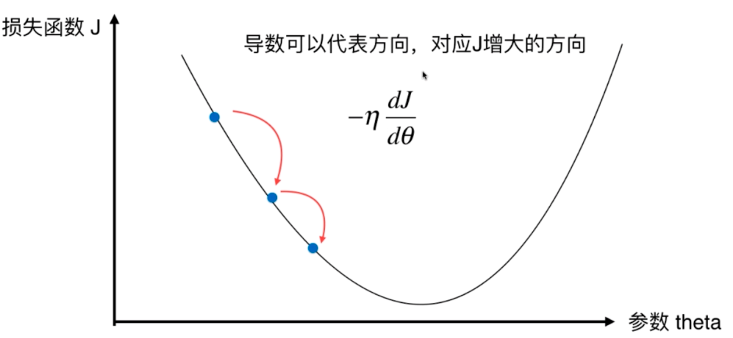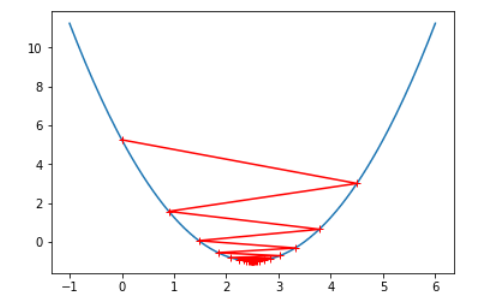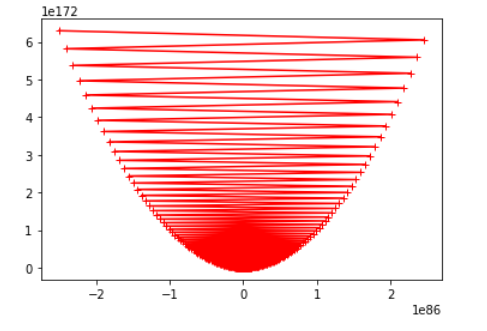梯度下降法-1.原理及简单实现
梯度下降法 (Gradient Descent)
- 不是一个机器学习算法
- 是一种基于搜索的最优化方法
- 作用:最小化一个损失函数 (梯度上升法:最大化一个效用函数)
原理 - 寻找损失函数J的最小值

\[\frac{dJ}{d\theta} = \frac{J_{\theta +1}-J_\theta }{\Delta \theta }
\]
导数代表theta单位变化时,J相应的变化,导数也可以代表方向,对应J增大的方向
\[\theta = \theta -\eta \frac{dJ}{d\theta}
\]
$\eta $ 为移动步长,关于$\eta $:
- $\eta $ 称为学习率
- $\eta $ 的取值影响获得最优解的速度
- $\eta $ 取值不合适,甚至得不到最优解
- $\eta $ 是梯度下降法中的一个超参数
注意,如下图所示,不是所有的函数都有唯一的极致点

解决办法:多次运行,随机化初始点(初始点也是梯度下降法的一个超参数)
模拟实现梯度下降法
import numpy
import matplotlib.pyplot as plt
#从-1到6之间,取140个点
plot_x = numpy.linspace(-1,6, 140)
# 绘制一个二次函数
plot_y = (plot_x - 2.5)**2-1
plt.plot(plot_x,plot_y)
plt.show()

J函数表达式
def J(theta):
try:
return (theta-2.5)**2-1
except:
return float('inf') #避免J太大
J函数的导数
def dJ(theta):
return 2*(theta-2.5)
梯度下降法核心
# 初始点
theta = 0.0
# 梯度下降的学习率
eta =0.1
espilon = 1e-8 #代表一个接近于0的数
theta_history = [theta]
while True:
gradient = dJ(theta) #导数代表了切线斜率
last_theta = theta
theta = theta - eta * gradient
theta_history.append(theta)
if abs(theta - last_theta) < espilon:
break
print(theta,J(theta),dJ(theta))
plt.plot(plot_x,J(plot_x))
plt.plot(numpy.array(theta_history),J(numpy.array(theta_history)),color='r', marker='+')
plt.show()

增大学习率 $\eta $
eta = 0.9时:

eta = 1.1时:

由上图可看出,随着步长 $\eta $ 选取的愈来愈大,梯度下降的过程开始变得不收敛



